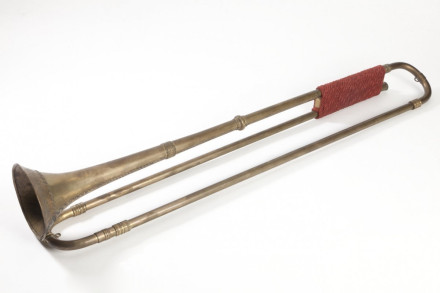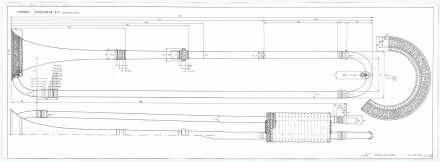History
The wreck that would later become known as Scheurrak SO1 was named after the channel where it was found. The wreck turned out to be a Dutch merchant ship with a cargo of wheat from the Baltic Sea that was still in good condition. It was discovered in 1984 by recreational divers.
The Scheurrak SO1 was wrecked in a storm just before the year 1600. A possible candidate for that storm was a violent storm that passed over the Texel Roads during Christmas night 1593, causing 44 ships to wreck.¹ The Texel Roads the most important hub in Northern Europe where merchant ships converged.
A violent storm ravaged the roadstead of Texel during Christmas night of 1593. This roadstead in the north of the Netherlands was one of the most important convergence points of merchant ships in Northern Europe at the time. Many ships were lost and among these was the ship whose wreck would become known as Scheurrak SO1 (it was called after the fairway in which it was found). The wreck turned out to be that of a Dutch merchant ship with a cargo of (still well preserved) Baltic wheat. It was discovered by amateur divers in 1984.
Archaeology
The wreck was excavated by the Netherlands Institute for Ship- and underwater Archaeology (NISA, the predecessor of the maritime archaeology department of the Cultural Heritage Agency of the Netherlands) between 1987 and 1997 when the NISA developed ways to do archaeological research in the muddy Dutch waters. It was the first large underwater excavation in the Netherlands.
Finds from the wreck
Several types of weaponry were found in the Scheurrak SO1 wreck . Amongst them were four iron cannons (so-called gotelingen) and five small gun carriages (with three wheels). The ammunition of the cannons varied from 6-8 cm - they are 2, 3 and 4 pounders. Seven arquebuses and some muskets were also found.

Special finds
A special linstock has been found in the wreck. A linstock (also called a lintstock, adapted from the Dutch 'lontstok' or 'match stick') is a staff with a fork at one end to hold a lighted slow match. Linstocks were used for firing cannons in the early days of artillery. This linstock is special because it is has a poem on its rim, with the name of the poet.
The following text is on the stick (in Old Dutch):
'Die avent en die muierghen zyn niet even goet
Den moerghen moet sorghen dat den avent niet en doet
Soude den avent sorghen als den morghen doet
Daer soner menigh ryen die nu gaen tefoet.
- Bymy cornelis clasoon van block dick ffff anno 1590.'
In English:
'The evening and morning are not equally good
The morning has to make what the evening does not
Should evening make what morning does
Then many would ride who are now on foot.
- Made by me Cornelis Claaszoon van Blokdijk in the year 1590.'
Some research has been done into the background of the poem. A sailor named Corneliszoon Claesz van Westerblokker lived in Blokdijk, a small village near the city of Hoorn. He was a gunner (so-called bosschieter). So it is possible that he was the man who wrote the poem on the stick.

Special finds
A large amount of personal items were found in the wreck.
A beautifully decorated trumpet with inscription Lissandro Milanese me fecit Genua 1589 (Lissandro Milanese heeft mij gemaakt te Genua in 1589).

Reconstruction trompet, Scheurrak SO1 1365.1

Reconstructie trumpet, Scheurrak SO1 1365.1
Among them are a decorated wooden box, containing the posessions of an official: a pair of slippers, a gavel, a set of ceremonial batons, a signet and a chunk of sealing wax. Many images of the finds from the wreck and drawings of it have been published on Wikimedia by the Cultural Heritage Agency of the Netherlands (see references).

Description
Construction
The ship has a double skin. Two thick layers of planks on the outside of the ship. During the excavation in the 80's and 90's, the theory was developed that this has to do with a new way of building ships. Major changes in shipbuilding took place in the Netherlands in the 16th century.
People went from clinker-built to carvel-built construction and from relatively small ships to increasingly larger ships that started long-distance trade. This not only required different techniques, but also a completely different way of thinking about ships and shipbuilding methods.
The ship found here was intended for the Baltic trade (these were called Oostvaarders by the Dutch, 'East Sailers'). When looking at the hull shape, it is clear that the ship found here had not yet evolved into a ship of the flute type (fluitschip), a widely used Dutch ship type in the 17th century.
The design of flutes was largely similar to that of the early galleons. They generally measured around 200-300 tons and were around 80 feet long. The pear-shaped vessel had a large cargo hold near the waterline and a relatively narrow deck above that. This was a way to bring down the amount of tolls collected by Denmark in the Øresund, which was assessed based on area of the main deck.
The fluit was square rigged with two or three masts. The masts of this type were much longer than those of galleons to allow for greater speed.


Status
Research 2023
From 8 to 26 May 2023, the Cultural Heritage Agency of the Netherlands (RCE) conducted research into the Scheurrak SO1 together with Leiden University. The commercial archaeological companies Vestigia, Baars-Cipro and MSDS-Marine have been hired to provide support.
Goal
The aim of the research is to obtain data about the ship constructions in order to formulate hypotheses that researchers at Leiden University have formed as a result of a study they conduct on behalf of the RCE.
Project leader Martijn Manders
Covering wreck site 2017
20 years after the excavations, the wreck appeared to have been washed free by erosion of the Wadden Sea bed. As a result, the remains had to be actively protected in order to be preserved, so that deterioration could be prevented as much as possible. To achieve this, the wreck is covered with fine mesh that can continue to retain the sand that moves across the seabed and in the water column. As a result, the remains are again covered by a thick layer of sand.
References
- Het Geheugen.
Het Geheugen - Boekomslagen. - Maarleveld, Th.J. (1990).
Het schip Scheurrak SO1. Een scheepsopgraving in de Waddenzee.
Spiegel Historiael Jrg. 25 nr. 12.
pp 573-577. - Wikimedia Commons.
Shipwreck Scheurrak SO-1. - research 2023.
- Bazelmans, prof. dr. J.G.A. (Rijksdienst voor het Cultureel Erfgoed); Maarleveld, prof. dr. T.J. (Syddansk Universitet); Overmeer, drs. A.B.M. (Rijksdienst voor het Cultureel Erfgoed; Alice Overmeer Scheepsarcheologie).
Opgraving en onderzoek van het scheepswrak van een laat-zestiende eeuwse Nederlandse koopvaarder, geladen met Baltisch graan. - Archief Amsterdam.
Kerstnacht 1593.